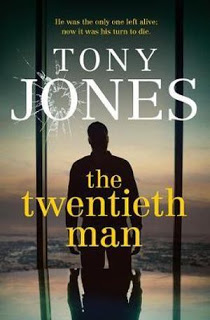‘The Twentieth Man’ Tony Jones
Prior to picking up this book I had no idea that Tony Jones, the journalist best known as the host of the often controversial ABC current affairs program QandA, was also a writer of fiction. From the very first page of this book it is clear that he is a very good writer, indeed.
I was drawn to this book as it is a political thriller, set in Australia, featuring actual historical and current characters in real locations, revolving around historical issues, and employs real, possible and fictitious dialogue. In this sense it is much more than a book of ‘what if’ historical fiction.
The novel is set predominantly during the heady days of 1972-3 Australian politics. Few would disagree that the election of Whitlam in 1972 heralded a period of immense social and political change. The events depicted in this book occur largely in Canberra, and more specifically in bars, restaurants and other locations of nostalgic importance to those of us who lived in the then sleepy town duringmthe 1970s.
The book’s main character is a young investigative journalist struggling to overcome the hurdles of having a father who was a card carrying member of the Communist Party and the rampant sexism of the time. Her prospects at work are further complicated after she has sex with her editor.
Jones does not begin his book, as authors often do, with lengthy scene setting or the introduction of characters. He launches straight into a description of a member of the Ustasha terrorist movement carrying two shopping bags containing bombs to their detonation locations – inner Sydney businesses run by Yugoslavs.

It soon becomes apparent that the Coalition government of Prime Minister Billy McMahon (who is mocked mercilessly) is disinclined to actively pursue the group responsible for the bombings, or even acknowledge that the historically anti communist Croatian war-criminals are responsible.
This in turn leads our journalist to search for evidence of ASIO complicity in arranging Australian asylum for perpetrators of war crimes (the brutality of which, we’re told, even shocked the German occupiers) in the puppet state of Croatia during World War II. This search intensifies following the election of the Whitlam government, and culminates in ASIO hating Attorney General Lionel Murphy’s, (one of the books’s more colourful characters characters) infamous raid on the ASIO headquarters in Melbourne.
Incorporated into the story are a number of familiar characters of the time, such as Al Grasby, George Negus, Mungo McCallum and Jim Spiegelman. Members of the press gallery are vividly described as resembling extras in a Led Zeppelin video clip.
Interwoven storylines include, the arrival in Yugoslavia of 20 radical Australian Croatians, armed and intent on instigating a war of independence against Tito’s Yugoslav regime, and the attempt to assassinate the visiting Yugoslav Prime Minister on the steps of the Old Parliament House in Canberra.
The Twentieth Man may be said to be a flawed book, in that at times its storylines lack credibility, the ending is a cliché, and the political dialogue, although witty, on one or two occasions seems to go on for too long. That these weaknesses barely detract from the book’s success is in large measure thanks to its main strength – Jone’s uncanny ability to capture and convey believable, uniquely Australian speech, behaviour and humour.
Consequently, there is a great deal of swearing in this book – but we wouldn’t expect otherwise from Australian politicians, journalists, police and spooks. The sexism, the swearing, and the sense of rebellion conveyed by Jones, do not seem contrived, but rather serve to reflect and fill in the gaps of what we may remember of the early 1970s.